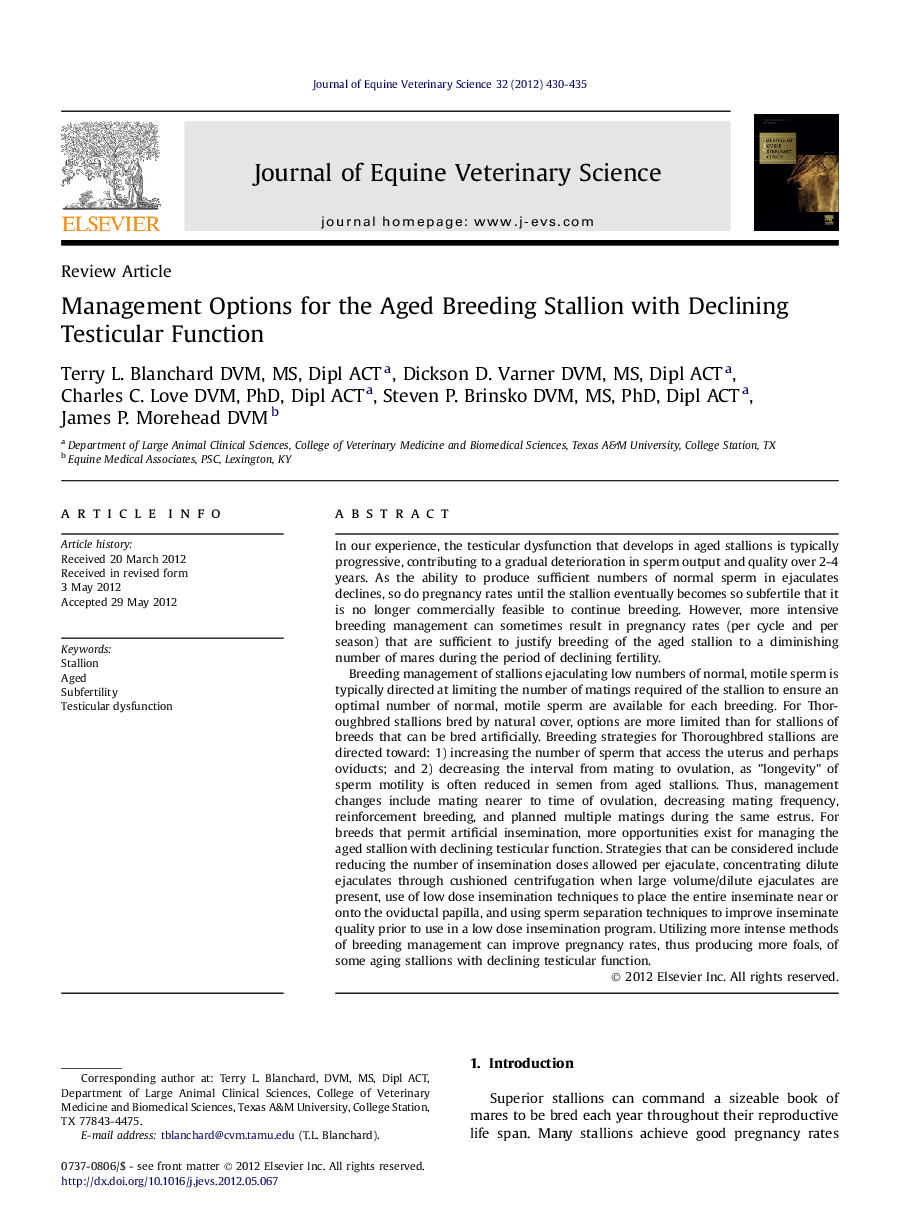| کد مقاله | کد نشریه | سال انتشار | مقاله انگلیسی | نسخه تمام متن |
|---|---|---|---|---|
| 2395577 | 1101574 | 2012 | 6 صفحه PDF | دانلود رایگان |

In our experience, the testicular dysfunction that develops in aged stallions is typically progressive, contributing to a gradual deterioration in sperm output and quality over 2-4 years. As the ability to produce sufficient numbers of normal sperm in ejaculates declines, so do pregnancy rates until the stallion eventually becomes so subfertile that it is no longer commercially feasible to continue breeding. However, more intensive breeding management can sometimes result in pregnancy rates (per cycle and per season) that are sufficient to justify breeding of the aged stallion to a diminishing number of mares during the period of declining fertility.Breeding management of stallions ejaculating low numbers of normal, motile sperm is typically directed at limiting the number of matings required of the stallion to ensure an optimal number of normal, motile sperm are available for each breeding. For Thoroughbred stallions bred by natural cover, options are more limited than for stallions of breeds that can be bred artificially. Breeding strategies for Thoroughbred stallions are directed toward: 1) increasing the number of sperm that access the uterus and perhaps oviducts; and 2) decreasing the interval from mating to ovulation, as "longevity" of sperm motility is often reduced in semen from aged stallions. Thus, management changes include mating nearer to time of ovulation, decreasing mating frequency, reinforcement breeding, and planned multiple matings during the same estrus. For breeds that permit artificial insemination, more opportunities exist for managing the aged stallion with declining testicular function. Strategies that can be considered include reducing the number of insemination doses allowed per ejaculate, concentrating dilute ejaculates through cushioned centrifugation when large volume/dilute ejaculates are present, use of low dose insemination techniques to place the entire inseminate near or onto the oviductal papilla, and using sperm separation techniques to improve inseminate quality prior to use in a low dose insemination program. Utilizing more intense methods of breeding management can improve pregnancy rates, thus producing more foals, of some aging stallions with declining testicular function.
Journal: Journal of Equine Veterinary Science - Volume 32, Issue 8, August 2012, Pages 430–435